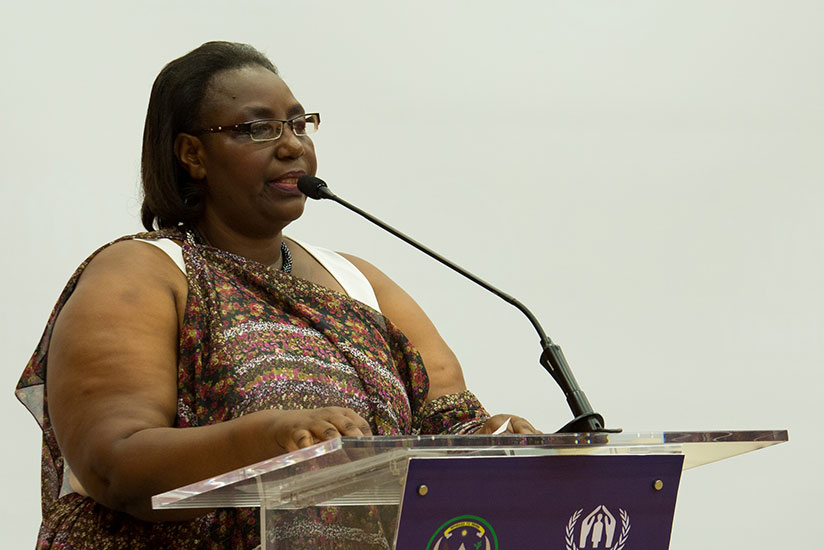The Minister for Disaster Management and Refugee Affairs (MIDIMAR) Seraphine Mukantabana, has said her ministry was carrying out a study to help find a solution to the persistent problem of lighting which has claimed many lives and destroyed property.


The Minister for Disaster Management and Refugee Affairs (MIDIMAR) Seraphine Mukantabana, has said her ministry was carrying out a study to help find a solution to the persistent problem of lighting which has claimed many lives and destroyed property.
She said lightning was among the factors that cause destructions in mountainous areas, pointing out that residents of Rutsiro District in the Western Province were most affected by lightning.
The minister made the remarks in Ngororero District where government officials and some development partners were meeting during the launch of the Disaster Reduction Week.
"The study will show us whether we can set up a given number of lightning rods in a village, such that it does not require each resident to buy a lightning rod. That study is getting finalised and in January [2017], we will be able to show you the number of the rods or the type of rods that can be used so that the people are protected,” she noted.
A lightning rod or lightning conductor also called strike termination device, is a metal rod or metallic object mounted on top of an elevated structure, which if lightning hits the structure, it will preferentially strike the rod and be conducted to the ground instead of passing through the structure, where it could start a fire or cause electrocution.
Figures from MIDIMAR show that between January and September 2016, lightning caused the deaths of 30 people, injured 61 and killed 48 livestock.
Between 2011 to September 2014, lightning strikes claimed 134 lives and injured 150 others across the country, with Rutsiro alone registering 30 deaths, according to information from MIDIMAR.
Mukantabana noted that instructions to help people avoid being struck by lightning had been elaborated and would be spread to Community Health Workers in villages so that every resident knows how they should behave.
Rutsiro District Mayor, Emérence Ayinkamiye told Sunday Times that as people gradually live in villages under grouped settlement programmes, the system can help protect them.
"Any time it rains, we expect a person or a livestock to be struck dead by lightning in our district,” Ayinkamiye said.
The Mayor of Ngororero District, Godefroid Ndayambaje, said the rods would make residents more secure mainly through organised grouped settlements, noting that lightning struck 12 cows dead at once from one farm in the district this year. How the system can work
Fidèle Claude Kalimunda Managing Director SONATUBES, a hardware and electronic equipment company, told Sunday Times that they were collaborating with MIDIMAR on the project.
He said the system was possible in areas where people live in organised clustered settlements.
He said they have a lightning rod with protection radius of 79 meters, which is a very high level of protection against lightning strike.
"It means that it is able to protect an area which can occupy between 30 and 40 homes, and the cost is estimated at Rwf7m and Rwf10m on average, installation inclusive,” he said adding that the system is cheaper compared to when each person covers the installation single handedly.
He, however, noted that such a cost might go higher or down depending on the distance, the type of the land and site in question.
editorial@newtimes.co.rw


